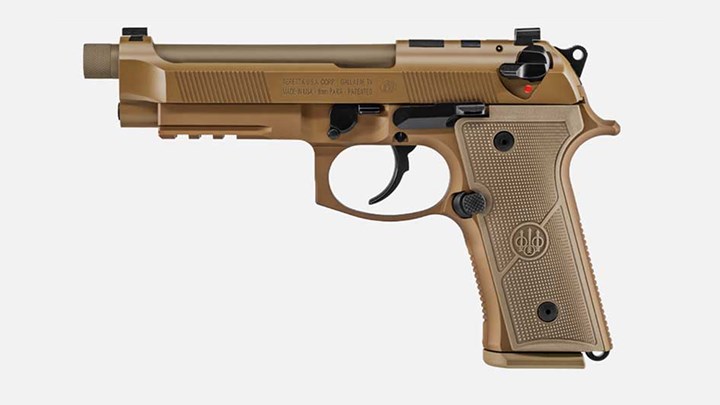Beretta has worked hard to deliver pistols to the U.S. military, but it has come to an end.
The first week of September closed a chapter on small arms for the United States military. Beretta USA marked the occasion with a simple note on its Facebook page with little fanfare, no press release scheduled and characteristic modesty when asked for more details.
“Last week marked an end of an era for Beretta USA,” the company posted on Sept. 7. “The Beretta USA team in Gallatin, TN, packed and shipped the last Beretta M9 pistol for the U.S. Armed Forces contract. Thank you to every Beretta USA team member who, over the last 36 years, has proudly manufactured the M9, and especially to all our brave servicewomen and men who have carried the M9 in their service to the United States of America.”
Unlike some manufacturers, rather than continuing to seek DoD contracts, Beretta has repackaged the M9 into the M9A4.
Beretta USA has announced the new M9A4, the latest model in the M9 series of pistols. As such, the M9A4 boasts new features such as a red-dot ready slide, an enhanced short reset Xtreme Trigger System, along with a higher capacity magazine.
Says Beretta: “Built to exceed the standards of even the most demanding tactical shooters, the M9A4 blends the proven design of the M9 with modern features such as a red-dot optic compatible slide and dovetailed tritium night sights for optimal sight options, an enhanced short reset Xtreme Trigger System, an 18-round magazine, and a Beretta Vertec frame with included aggressively textured Vertec-style thin grips that ensure a more natural fit for all shooters.”
The red-dot ready M9A4 includes integral slide cuts to allow for the mounting of different optic plate styles. Beretta will provide a free optic plate when buyers register their purchased firearms, or they can purchase an aftermarket one. Shipping with blanking covers, there are five different plates available for the M9A4 to mount the most popular optics.
The M9A4 also sports a removable front sight for shooters with distinct preferences in terms of sight picture. In addition, a variety of accessory options are possible thanks to the Picatinny rail located in front of the trigger guard.
As for magazines, the M9A4 has ones with 10- and 15-round capacities, plus a new 18-round magazine.
MSRP is $1,099. Built in the U.S., the Beretta M9A4 available for purchase now in a wear-resistant FDE finish.
It has a nice look and a decent price point. It appears to be the companion of what Langdon Tactical does to this firearm (without a few features). The slide looks like it has been lightened (no doubt to compensate for the weight of the optic), it is optics ready, and they apparently are selling this in FDE. I think Ernest Langdon partnered with them on this.

But then, I like hammer fired guns and classic safeties.




